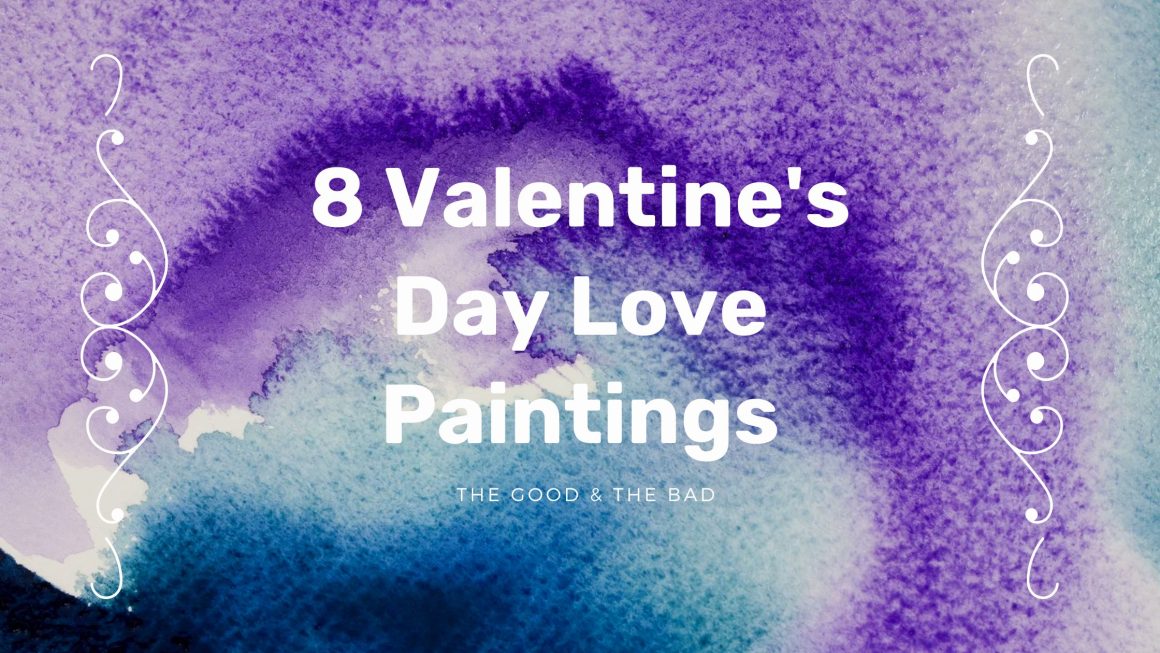We thought we would round up 8 Valentine’s Day Love paintings or just some love-inspired art with Valentine’s Day just around the corner, you might want to have a good think about what your love looks like. A Munch or a Klimt?
Valentine’s Day often evokes a spectrum of emotions, from the heights of romantic joy to the depths of heartache. Throughout history, artists have captured these dualities in their works. Here are eight paintings that reflect both the delightful and distressing facets of love.
“The Kiss” by Gustav Klimt (1907–1908)
This iconic painting portrays an intimate embrace, symbolizing the blissful and passionate side of love.

″The Kiss″ by Gustav Klimt (1907–1908)
“The Lovers” by René Magritte (1928)
Depicting two lovers with their heads veiled, this artwork suggests the mysteries and barriers that can exist in relationships, highlighting both connection and isolation.

″The Lovers″ by René Magritte (1928)
“Love and Pain” (also known as “Vampire”) by Edvard Munch (1895)
Munch illustrates a woman kissing a man’s neck, which can be interpreted as both a tender moment and a metaphor for the pain love can inflict.

″Love and Pain″ (also known as ″Vampire″) by Edvard Munch (1895)
“The Wedding Dance” by Pieter Bruegel the Elder (1566)
This lively scene captures the joy and communal celebration of love during a wedding, emphasizing the fun and festive aspects of romantic unions.

″The Wedding Dance″ by Pieter Bruegel the Elder (1566)
“American Gothic” by Grant Wood (1930)
While not a traditional romantic painting, the stern expressions of the couple can be seen as a commentary on the challenges and mundanity that can accompany long-term relationships.

″American Gothic″ by Grant Wood (1930)
“The Broken Column” by Frida Kahlo (1944)
Kahlo’s self-portrait reflects her physical and emotional pain, symbolizing the suffering that can be intertwined with love and personal relationships.

″The Broken Column″ by Frida Kahlo (1944)
“The Nightmare” by Henry Fuseli (1781)
This painting delves into the subconscious fears and anxieties that can plague lovers, representing the darker side of romantic entanglements.

″The Nightmare″ by Henry Fuseli (1781)
“The Allegory of Love” series by Paolo Veronese (circa 1570)
This series includes paintings like “Infidelity” and “Scorn,” depicting the complexities and potential betrayals in love, contrasting with “The Happy Union,” which celebrates harmonious relationships.

″The Allegory of Love″ series by Paolo Veronese (circa 1570)
These artworks collectively capture the dual nature of Valentine’s Day and the multifaceted nature of love, embodying both its exhilarating joys and its profound sorrows. Can you relate to one of the paintings? Or have you got another painting in mind? Let us know on our socials!

